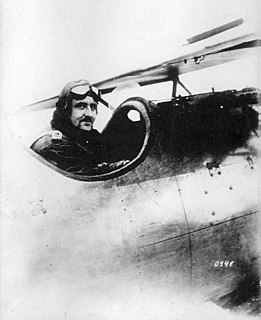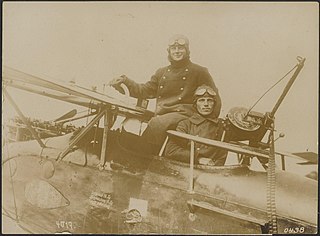Biography
Kurt Seit was born on 30 July 1894. He was serving in the German ground forces when World War I began. He was awarded the Iron Cross Second Class on 3 November 1914. He transferred to aviation duty, serving with Flieger-Abteilung 199 (Flier Detachment 199). He subsequently went for fighter training, which got him posted to Jagdstaffel 80 on 4 June 1918. [2]
On 22 July 1918, he shot down an Airco DH.9 bomber from No. 99 Squadron RAF. Four days later, he was awarded the Iron Cross First Class. He would down an enemy aircraft each of the next four months, bagging two more DH.9s, an observation balloon, and a Breguet XIV. [2]
Although the dates are unknown, Seitz was wounded four times, entitling him to the Silver Wound Badge [2]
Lieutenant August Hanko was a German World War I flying ace credited with five aerial victories.
Leutnant Werner Wagener was a World War I flying ace credited with five aerial victories.
Kurt Wissemann was a German World War I flying ace credited with five aerial victories.

Leutnant Kurt Küppers was a World War I flying ace credited with six aerial victories.

Karl Paul Schlegel was a German World War I flying ace credited with 22 victories. Schlegel was shot down by French ace Petar Marinovich. He was the last German ace to be killed in World War I.
VizefeldwebelErnst Wiehle was a World War I flying ace credited with six aerial victories.
Leutnant Helmut Dilthey IC was a German pilot who became a World War I flying ace credited with seven aerial victories.
OffizierstellvertreterWilhelm Kühne was a World War I flying ace credited with seven confirmed aerial victories and five unconfirmed ones.
Leutnant Kurt Adolf Monnington (1891–1939) was a World War I flying ace credited with eight aerial victories.
Oberflugmeister Karl Meyer was a World War I flying ace credited with eight aerial victories. He was Germany's first naval ace, and one of the few German two-seater aces.
Leutnant Franz Piechulek was a World War I flying ace credited with 14 aerial victories.
Leutnant Dieter Collin IC was a World War I German flying ace credited with 13 aerial victories.
Leutnant Heinrich Arntzen was a German World War I flying ace credited with eleven aerial victories.
Leutnant Hermann Pfeiffer IC was a German World War I flying ace credited with eleven aerial victories.
Oberleutnant Franz Schleiff was a World War I flying ace credited with twelve aerial victories. Nine additional combat claims went uncredited.
OffizierstellvertreterBernhard Ultsch was a World War I flying ace credited with twelve aerial victories.
Leutnant Arno Benzler was a German First World War flying ace and aerial commander credited with nine confirmed aerial victories.

Feldwebel Friedrich Huffzky was a German flying ace during World War I. He was the pilot of the most successful two-seater German fighter crew of the war, scoring nine confirmed aerial victories.
OffizierstellvertreterFritz Gustav August Kosmahl HOH, IC was one of the first flying aces of Germany's Luftstreitkräfte during World War I. He was one of the few German two-seater aces of the war, being officially credited with nine aerial victories. He was also one of the first ten German aviators to earn the Royal House Order of Hohenzollern.
Royal Bavarian Jagdstaffel 80, commonly abbreviated to Jasta 80, was a "hunting group" of the Luftstreitkräfte, the air arm of the Imperial German Army during World War I. The squadron scored 15 aerial victories during the war, including four observation balloons downed. The unit's victories came at the expense of two killed in action, three killed in flying accidents, two injured in accidents, six wounded in action, and one taken prisoner of war.
This page is based on this
Wikipedia article Text is available under the
CC BY-SA 4.0 license; additional terms may apply.
Images, videos and audio are available under their respective licenses.


